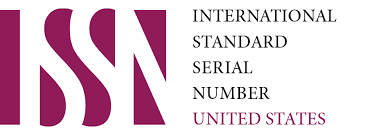Comparative analysis of technologies and devices for the blind and visually impaired
Keywords:
gadget, neural network, blind, smartphoneAbstract
Today, techniques, technologies, in a word, information technologies are rapidly developing. So far, the development of information technologies and achievements requires the need to inform all spheres of human life. Using the capabilities of these technologies, special devices are produced for blind and visually impaired people. The ability to see, to be able to see fully, understand and perceive this bright world and its diversity is one of the greatest gifts given to mankind. In this paper, we present a general description of devices and technologies for the blind and visually impaired, their principles of operation, as well as a comparative analysis of the results obtained during the research.
References
“Blindness and vision impairment,” WHO, 2022. [Online]. Available: https://www.who.int/news-room/fact-sheets/detail/blindness-and-visual-impairment
[Online]. Available: http://gomel.beltiz.by/2020/02/02/izuchaem-brail
Examples of Technology for the Blind: Beyond Braille [Online]. Available: https://www.bbvaopenmind.com/en/technology/innovation/technology-for-blind-people-beyond-braille/
Smart-ochki pozvolyat slepim «videt» [Online]. Available: https://naked-science.ru/article/hi-tech/smart-ochki-pozvolyat-slepym-v
Instant Braille translator can fit in your hand [Online]. Available: https://www.cnet.com/science/portable-braille-translator-mit-students-team-tactile
luchshix texnologiy dlya nezryachix [Online]. Available: https://blog.doc.help/articles/technology/5-luchshikh-tekhnologiy-dlya-nezryachikh
Sovremenniye informatsionniye texnologii i nezryachiye polzovateli: adaptivniye resheniya i dostupniy sifrovoy content [Online]. Available: https://tiflocentre.ru/stati/sovremennye-informacionnye-tehnologii-i-nezryachie-polzovateli.php
Klyuchikov A.V., Bolshakov A.A., Grepechuk Yu.N., Lobanov V.V. Ustroystvo raspoznavaniya prepyatstviy dlya slabovidyashix i nezryachix lyudey, Fundamentalniye issledovaniya. – 2017. – № 10-1. – S. 13-18.
Shvetsov V.I., Roshina M.A. Kompyuterniye tiflotexnologii v sotsialnoy integratsii lits s glubokimi narusheniyami zreniya: Uchebnoye posobiye. — Nijniy Novgorod: Izd-vo Nijegorodskogo gosuniversiteta, 2007. — 154 s.
Hicks S.L., Wilson I., Muhammed L., Worsfold J., Downes S.M., et al. (2013) A Depth-Based Head-Mounted Visual Display to Aid Navigation in Partially Sighted Individuals. PLOS ONE 8(7): e67695. https://doi.org/10.1371/journal.pone.0067695
K. Nosirov, S. Begmatov, and M. Arabboev, “Display integrated mobile phone prototype for blind people,” in International Conference on Information Science and Communications Technologies: Applications, Trends and Opportunities, ICISCT 2019, 2019, pp. 1–4.
M. Arabboev, S. Begmatov, Z. Rakhimov, K. Gaziev, and K. Nosirov, “Design of an External USB Braille Keyboard for Computers”, CAJOTAS, vol. 3, no. 11, pp. 145-150, Nov. 2022.
M. Arabboev, S. Begmatov, and K. Nosirov, “Development of Software for an External Braille Keyboard for Smartphones”, CAJMTCS, vol. 3, no. 11, pp. 60-65, Nov. 2022.
Downloads
Published
Issue
Section
License

This work is licensed under a Creative Commons Attribution-NonCommercial 4.0 International License.
User Rights
Under the Creative Commons Attribution-NonCommercial 4.0 International (CC-BY-NC), the author (s) and users are free to share (copy, distribute and transmit the contribution).
Rights of Authors
Authors retain the following rights:
1. Copyright and other proprietary rights relating to the article, such as patent rights,
2. the right to use the substance of the article in future works, including lectures and books,
3. the right to reproduce the article for own purposes, provided the copies are not offered for sale,
4. the right to self-archive the article.












